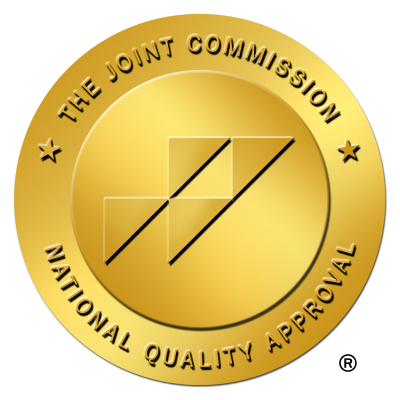How to create a relapse prevention plan

Understanding the Importance of Relapse Prevention
In the journey of recovery from substance use or mental health challenges, crafting a comprehensive relapse prevention plan is paramount. This plan serves as a personalized blueprint designed to help individuals sustain their recovery by identifying potential triggers, managing cravings, and establishing robust coping mechanisms. Whether created independently or with professional guidance, a well-structured plan is vital for adapting to life's challenges while maintaining long-term sobriety. This article delves into the steps of developing an effective relapse prevention plan tailored to individual needs, highlighting essential components, strategies, and the significance of supportive networks. By understanding and implementing these strategies, individuals can enhance their resilience and safeguard their recovery journey.
Building a Solid Foundation: Essential Components of a Relapse Prevention Plan

What does a typical relapse prevention plan include?
A typical relapse prevention plan includes a written document created collaboratively with a treatment team, outlining the risks associated with relapse and strategies to address them. Key components often found in this plan are:
- Identification of Triggers: Situations or emotions that may lead to a substance use urge.
- Coping Tools: Techniques for managing cravings effectively, such as mindfulness, journaling, or exercise.
- Support Contacts: Essential contact information for support groups, sponsors, and trusted individuals to turn to during tough times.
This plan also encourages ongoing self-reflection by prompting individuals to document their motivations for sobriety and ways to cope with potential triggers. Furthermore, it brings attention to the significance of aftercare programs, which help reinforce coping skills and support long-term recovery.
Importance of personalizing the plan
Personalization is critical when developing a relapse prevention plan. Each individual's experiences, triggers, and support systems differ significantly. Customizing a plan not only ensures it addresses the specific challenges a person may encounter but also fosters a greater sense of ownership and commitment to recovery.
By tailoring strategies and coping mechanisms to fit their unique needs, individuals can more effectively navigate the temptation of relapse, reinforcing the skills that support their ongoing journey.
Monitoring and maintenance
Regular monitoring and maintenance of a relapse prevention plan are vital. This process involves periodic reviews and adjustments as circumstances and personal situations evolve. By keeping the plan relevant and effective, individuals can proactively handle potential triggers, ensuring that their strategies remain aligned with their recovery goals over time.
To summarize, a robust relapse prevention plan is a detailed, evolving document encompassing personalized strategies, essential support networks, and a strong focus on coping mechanisms—factors that collectively contribute to long-term sobriety.
The Step-by-Step Guide to Crafting Your Plan

Structured Approach to Creating a Relapse Prevention Plan
Developing a personalized relapse prevention plan begins with a structured approach that facilitates an in-depth understanding of your unique needs and challenges. This process typically involves several key steps that focus on introspection and strategic planning.
Personal History Assessment
Start by assessing your personal history with substances. Reflect on past experiences that can inform your plan, such as previous relapses or triggers. This self-examination helps in identifying:
- Specific triggers: Situations or people that have previously led to substance use.
- Warning signs: Emotional shifts or behaviors that precede cravings like isolation or neglecting self-care.
Setting Recovery Goals
Next, set clear, achievable recovery goals that provide direction and motivation for your efforts. Employ the SMART criteria for goal-setting:
- Specific: Define what you wish to accomplish.
- Measurable: Establish criteria to track your progress.
- Achievable: Ensure that goals are realistic.
- Relevant: Align goals with your broader life aspirations.
- Time-bound: Set deadlines for achieving each goal.
By integrating your personal history with well-defined goals, you'll create a comprehensive and effective relapse prevention plan that can significantly enhance your chances of sustained recovery.
How can I write an effective relapse prevention plan?
To write an effective relapse prevention plan, start by identifying your personal recovery goals to guide your actions. Next, analyze and manage specific triggers that may lead to cravings, developing coping strategies to handle them effectively. Focus on improving self-care by incorporating healthy lifestyle practices that support your overall well-being. Establish a support system by preparing communication tools to engage family and loved ones, ensuring they can help you during difficult times. Finally, create methods for accountability to keep you motivated and on track with your recovery journey.
Navigating Triggers and Managing Cravings

Identification of Triggers
Identifying triggers is a crucial step in relapse prevention planning. Triggers can be specific situations, people, or emotional states linked to past substance use. Recognizing these 'enemies' enables individuals to develop strategies to avoid or manage them effectively. Common personal triggers may include:
- Social situations: Parties or gatherings where substances are present.
- Emotional states: Feelings of anger, stress, or boredom can increase vulnerability.
- Contextual cues: Environments reminiscent of past usage, like particular bars or neighborhoods.
Coping Strategies for Cravings
Once triggers are identified, developing coping strategies to manage cravings is essential. Here are some effective techniques:
- Journaling: Writing about feelings can help process emotions and track cravings.
- Engaging in healthy activities: Exercise, hobbies, or volunteer work can distract from the urge to use.
- Establishing personal boundaries: Distancing oneself from friends or environments that trigger cravings is vital.
Mindfulness and Behavioral Techniques
Incorporating mindfulness techniques into a relapse prevention plan can significantly enhance emotional regulation and awareness. This involves:
- Mindfulness meditation: Encouraging focus on the present moment, which can help acknowledge cravings without immediate reaction.
- Stress-reduction exercises: Techniques such as deep breathing or yoga support emotional balance.
- Practicing self-awareness: Regular self-reflection allows individuals to understand their emotional states and triggers better.
By combining these strategies, individuals can create a robust structure for navigating the complexities of recovery, ensuring they remain on track despite challenges.
Understanding and Applying the Stages of Relapse

Three Stages of Relapse
Relapse is commonly viewed as a process that unfolds in three distinct stages: emotional, mental, and physical. Each stage presents unique challenges that can predict and precede a return to substance use.
- Emotional Relapse: This stage involves feelings that may not yet lead to substance use, such as anxiety, irritability, and isolation. Individuals might struggle with poor self-care, which can trigger deeper emotional distress.
- Mental Relapse: Here, individuals experience conflicting thoughts about using substances—a desire for sobriety battles with cravings. Emotional turmoil often peaks as individuals may start planning relapse.
- Physical Relapse: This final stage is characterized by the act of using substances again. Previously developed coping mechanisms may be ineffective, resulting in a potential cycle of continued use.
Recognizing Warning Signs
Recognizing signs that indicate a potential relapse is vital. Common warning signs include:
- Changes in Behavior: Withdrawal from support networks and previously enjoyed activities.
- Mood Swings: Increased irritability or anxiety can forewarn emotional relapse.
- Neglecting Self-Care: A drop in personal care routines indicates growing emotional distress.
By remaining vigilant about these signs, individuals can maintain awareness of their emotional health, thereby reducing the risk of progressing toward a physical relapse.
Preventative Measures
To prevent a relapse, individuals can take several proactive approaches:
- Implement Coping Strategies: Recognizing triggers and using techniques like mindfulness or journaling can significantly reduce cravings.
- Establish a Support Network: Regular contact with friends, family, and support groups can provide essential encouragement and accountability.
- Create a Relapse Response Plan: Having a clear action plan detailing steps to take when warning signs appear will prepare individuals for challenging moments and reinforce their recovery commitment.
How does understanding the stages of relapse help cope with potential relapses?
Understanding the stages of relapse—emotional, mental, and physical—helps individuals identify early warning signs, enabling them to take proactive measures to prevent a full relapse. During the emotional stage, recognizing signs of poor self-care can lead individuals to address their emotional needs before they escalate. The mental stage involves internal conflict where the desire to use substances can surface; being aware of this allows individuals to implement coping strategies and seek support. Finally, understanding that physical relapse marks the culmination of these previous stages highlights the importance of vigilance and preparation. Overall, this knowledge empowers individuals to establish healthy coping mechanisms and enhances their confidence in maintaining sobriety.
Implementing the Gorski Method for Relapse Prevention

Overview of the Gorski method
The Gorski method for relapse prevention is a comprehensive approach to managing the risks associated with substance use relapse. It combines cognitive-behavioral techniques with essential elements from 12-step programs, focusing on personalizing recovery strategies to effectively address individual challenges and triggers. The method is designed to help individuals recognize early warning signs and build a robust structure around their relapse prevention efforts.
What are the nine stages of a relapse prevention plan according to the Gorski method?
The nine stages of a relapse prevention plan according to the Gorski method are:
| Stage | Description |
|---|---|
| 1. Stabilization | Establishing a solid foundation for recovery, focusing on immediate stabilization of emotions and behaviors. |
| 2. Assessment | Evaluating the individual's history, triggers, and current state to identify areas needing focus. |
| 3. Relapse Education | Understanding the nature of relapse, the stages involved, and the importance of proactive management. |
| 4. Warning Sign Identification | Identifying specific signs that may indicate impending relapse, facilitating early intervention. |
| 5. Warning Sign Management | Developing strategies to effectively cope with or mitigate the identified warning signs. |
| 6. Recovery Planning | Creating a detailed action plan that includes personal goals, coping strategies, and support networks. |
| 7. Inventory Training | Teaching methods for self-assessment and monitoring personal progress toward recovery goals. |
| 8. Family Involvement | Engaging family members to provide support and accountability in the recovery process. |
| 9. Continuing Care | Establishing a long-term care plan that includes follow-up and ongoing support to maintain sobriety. |
Application in personal plans
When applying the Gorski method, individuals are encouraged to tailor each of the nine stages to their unique circumstances. This personalization maximizes the effectiveness of the plan, allowing individuals to navigate their recovery pathways confidently. Continuous education about triggers and personal motivations fosters resilience, ultimately enhancing the chances for long-term sobriety.
The Five Fundamental Rules of Relapse Prevention
What are the five rules of relapse prevention?
The five rules of relapse prevention serve as essential guidelines to support individuals on their recovery journey. These rules are:
- Change your life: Create an environment that reduces the chances of substance use by avoiding triggers and high-risk situations.
- Be completely honest: Honesty is crucial in overcoming addiction. Hiding struggles can jeopardize recovery; transparency fosters accountability.
- Ask for help: Emphasizing the importance of a support network, seeking assistance from self-help groups and trusted individuals enhances recovery.
- Practice self-care: Focus on maintaining both physical and emotional well-being. Regular exercise, a balanced diet, and sleep contribute to overall recovery success.
- Don't bend the rules: Adhere strictly to recovery strategies. Avoid seeking loopholes, as consistency is vital in preventing relapse.
Building a support system
Developing a robust support system is essential for effective relapse prevention. Engage with family, friends, and support groups to create a network that provides encouragement and understanding. Regular contact with sponsors or mentors can enhance accountability.
Role of honesty and self-care
Honesty fosters trust and helps individuals confront their challenges directly, reducing the likelihood of relapse. Alongside this, prioritizing self-care by incorporating healthy routines creates a more resilient mindset. Activities such as meditation, proper nutrition, and physical exercise not only bolster emotional stability but also lower stress levels, demonstrating their critical role in successful recovery.
Effective Coping Mechanisms and Goal-Setting Strategies
What are effective coping mechanisms and goal-setting strategies for relapse prevention?
Effective coping mechanisms and goal-setting strategies are vital for individuals in recovery to minimize the risk of relapse. Recognizing personal triggers, such as high-stress situations or specific emotional states, is the foundational step in this process.
Mindfulness Techniques
Mindfulness practices, such as meditation and techniques like the 5-4-3-2-1 grounding exercise, promote present-moment awareness, making it easier to manage cravings. These techniques help individuals become more attuned to their emotional states and develop healthier responses to stress.
Establishing a Support Network
Building a solid support network is equally important. Engaging family and friends, along with participation in self-help groups such as Alcoholics Anonymous, fosters accountability and provides encouragement throughout recovery. This support can offer valuable insights and a sense of community that is pivotal for success.
Goal Setting in Recovery
Setting clear and achievable goals not only provides direction but also encourages personal growth. Goals should encompass various aspects of life, including relationships and personal health. Regularly reviewing these goals ensures they remain relevant and attainable. Through cognitive-behavioral therapy (CBT), individuals can also reshape negative thought patterns, further enhancing their coping skills.
Incorporating self-care routines and consistent self-assessment plays a significant role in resilience, helping individuals stay committed to their recovery journey.
Maintaining and Adapting Your Relapse Prevention Plan
Regular Review and Adaptation
Maintaining a relapse prevention plan involves regular reviews to assess its effectiveness. As life changes, so do triggers and support systems. This ongoing evaluation helps ensure the plan remains relevant. Scheduling monthly check-ins can provide opportunities to reflect on personal growth and necessary adjustments.
Incorporating Feedback
Incorporating feedback from trusted friends, family, or support group members is essential. Their perspectives can help identify areas needing improvement and new strategies to incorporate into your plan. Engage with your support network regularly to discuss changes in your circumstances and receive guidance.
Sustaining Long-term Recovery
Sustaining long-term recovery requires commitment to not only follow the plan but to view it as a dynamic tool. By proactively revising the plan based on what is working or not, individuals can improve their resilience against relapse. Tracking progress and celebrating successes reinforces motivation while adapting the plan ensures it meets current needs.
Moving Forward with Confidence
Creating a relapse prevention plan is a proactive step in ensuring sustained recovery from substance use or mental health challenges. By understanding the essential components of such a plan, individuals are better equipped to identify and navigate potential triggers, build a solid support system, and maintain their goals with resilience. The process requires commitment and ongoing adaptation, but with the right strategies, individuals can confidently progress on their journey towards lasting sobriety. Access to resources and the involvement of a supportive network can amplify these efforts, turning a well-crafted relapse prevention plan into a powerful ally in the recovery process.
References
- How to Create a Successful Relapse Prevention Plan
- How to Write a Bulletproof Relapse Prevention Plan - River Oaks
- [PDF] Relapse Prevention Plan
- How to Create a Relapse Prevention Plan
- Addiction Relapse Prevention - StatPearls - NCBI Bookshelf
- 3 Examples of a Relapse Prevention Plan | Addiction Treatment
- What is a Relapse Prevention Plan? - Verywell Mind
- How To Create a Relapse Prevention Plan (Downloadable Example)
- Relapse Prevention Plans - CSG Justice Center
- [PDF] Relapse Prevention Plan
You’re not alone in this.
When mental health challenges and addiction intersect, it can feel isolating. At Arista, we offer compassionate, evidence-based, and trauma-informed care to help you heal, grow, and move forward.
You’re not alone in this.
When mental health challenges and addiction intersect, it can feel isolating. At Arista, we offer compassionate, evidence-based, and trauma-informed care to help you heal, grow, and move forward.
Support that moves with you.
You’ve taken a brave first step. At Arista Recovery, we’re here to help you continue with best-in-class care designed for long-term healing and support.
.webp)






